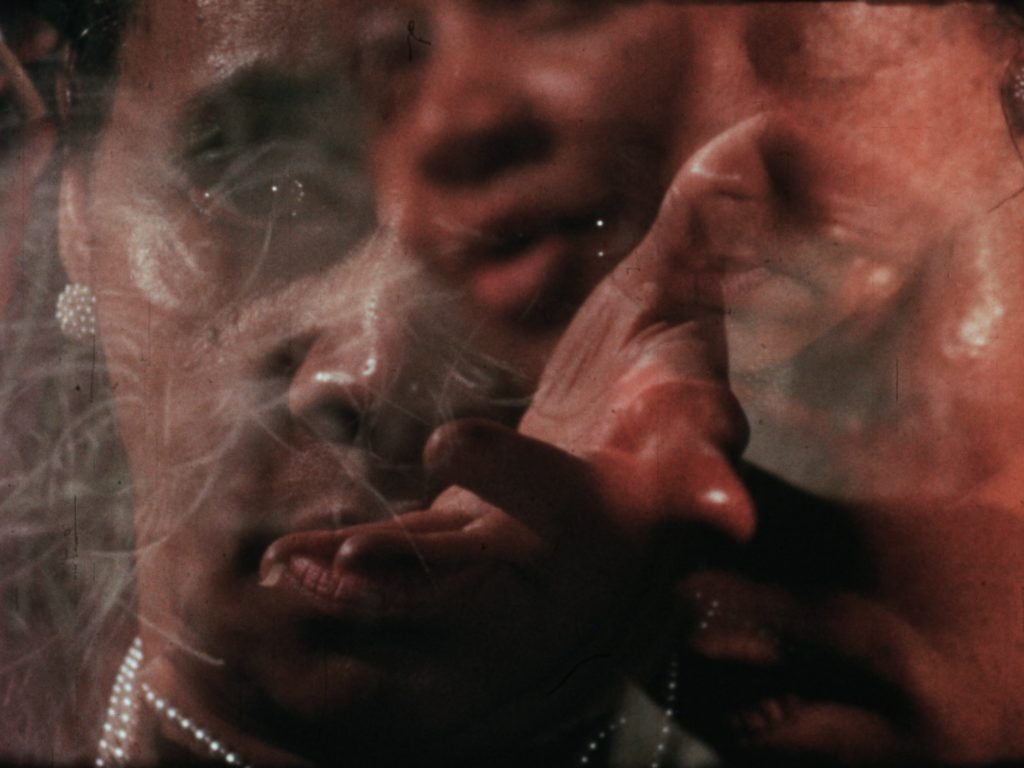
The Films of Edward Owens were restored in a joint project undertaken by Chicago Film Society, The New American Cinema Group, Inc./The Film-Makers’ Cooperative, and the John M. Flaxman Library at the School of the Art Institute of Chicago. This project was made possible with the support of the National Film Preservation Foundation’s Avant-Garde Masters Grant Program and the Film Foundation. Funding provided by the Hobson/Lucas Family Foundation. Restoration: BB Optics; Laboratory Services: Colorlab.
Introduction
Biographical Sketch
Critical Reappraisal
The Films:
• Autre fois j’ai aime une femme
• Tomorrow’s Promise
• Remembrance: A Portrait Study
• Private Imaginings and Narrative Facts
About the Restorations
INTRODUCTION
By the age of twenty-one, Edward Owens had won a scholarship to the School of the Art Institute of Chicago, studied under Gregory Markopoulos, carved out a precarious place among New York’s queer underground, met Andy Warhol, attracted the adulation of Charles Boultenhouse and Parker Tyler, and made a handful of distinctive films that screened around the globe. Then his filmmaking career abruptly stopped, never to resume, while the films remained in the collection of the Film-Makers’ Coop, unrented and unseen for thirty-five years.
Viewed today, Owens’s work demonstrates the outsized influence of his mentors but also points the way to a uniquely personal and interior cinema—home movie portraits composed with an almost beatific glow, the subjects simultaneously intimate and larger than life. As the only known gay African American filmmaker working during the New American Cinema era, Owens’s work is also an invaluable contribution to a renewed survey of the field, a voice almost completely excluded from the established canon of American avant-garde cinema.
BIOGRAPHICAL SKETCH
A native of Chicago’s South Side, Edward Owens (1949 – 2010) worked as a teenage usher at the Carnegie Theatre. Inspired by the costumes of Hollywood designer Jean Louis, Owens aspired to design women’s clothes and showed his sketches to Merry Berry, the advertising manager for the local department store Charles A. Stevens. Berry swiftly sponsored Owens’s enrollment at the School of the Art Institute of Chicago (SAIC), which offered an advance-admission program for talented high-school students. Rooted in his small and seemingly self-made artistic community, Owens exhibited his paintings, drawings, and three-dimensional collages in the galleries of the Carnegie and Charles A. Stevens.
The arrival of filmmaker Gregory Markopoulos as a guest instructor at SAIC in 1966 changed the trajectory of Owens’s life. Impressed by the 8mm films that Owens had made as a teenager, Markopoulos encouraged him to work on a grander scale. Owens’s first 16mm film, Autre fois, j’ai aimé une femme, carries a dedication to Markopoulos in its opening credits and works within his mentor’s carnal and mysterious idiom. The film screened at several venues around Chicago, including the Art Institute and the Second City Film Center, complete with an endorsement from Markopoulos, who called Owens “one of the few for whom ‘amateur’ and ‘professional’ need have no significance whatsoever .… [H]e will leave us breathless for his next work.”
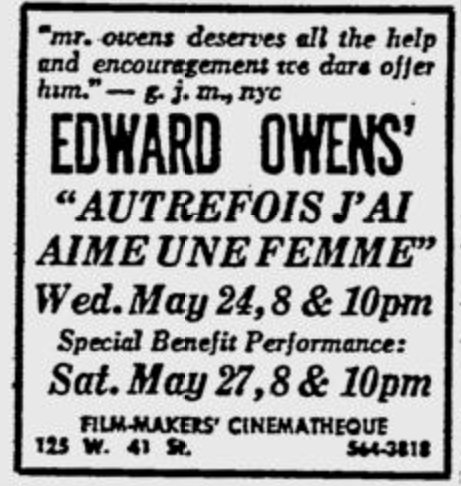
When Markopoulos abruptly quit SAIC after two semesters, he encouraged Owens and his girlfriend Gloria Rich (the star of Autre fois and a concessionaire at the Carnegie) to join him in New York. Once there, Owens was initiated into the avant-garde scene by Markopoulos, who introduced him to Andy Warhol, Marie Menken, and Gerald Malanga at a tea at the Dakota. Markopoulos also found Owens a job designing window displays for Brentano’s Fifth Avenue bookstore under the supervision of poet and filmmaker Charles Boultenhouse, who maintained a day job at the bookstore for decades.
Boultenhouse would soon take Owens under his wing and introduce him to the New York bastions of the art world, fine dining, and queer counterculture, including evenings at the Stonewall Inn. Owens and Boultenhouse became lovers, with the tacit approval of the latter’s partner, critic Parker Tyler. As Owens described the arrangement decades later in an interview with Light Industry programmer Ed Halter, “I really wasn’t homosexual until I met Charles. The reason I say I was homosexual was because Charles offered me the world. He taught me how to read. He taught me what to read …. He introduced me to so much.”
A teenage prodigy not unlike his contemporary and fellow Markopoulos proteges Robert Beavers and Tom Chomont, Owens met all the right people and briefly enjoyed the support of the underground’s key institutions and tastemakers. His second film, Tomorrow’s Promise, played at the Fourth International Film Exhibition at Knokke-le-Zoute, Belgium, and the Museo de Arte Moderno in Rio de Janeiro. Jonas Mekas promised a one-man show of Owens’s work at the Film-Makers’ Cinematheque and loaned him his tripod. The fifth edition of the Film-Makers’ Coop catalog, published in 1971, carried three Owens titles, along with laudatory comments from Boultenhouse, Tyler, and Gregory Battcock, editor of New American Cinema: A Critical Anthology. Tyler cited Owens’s Remembrance: A Portrait Study as a historically significant work in the appendix of his 1969 survey, Underground Film: A Critical History, but curiously said nothing about the film or Owens in the body of the text itself.
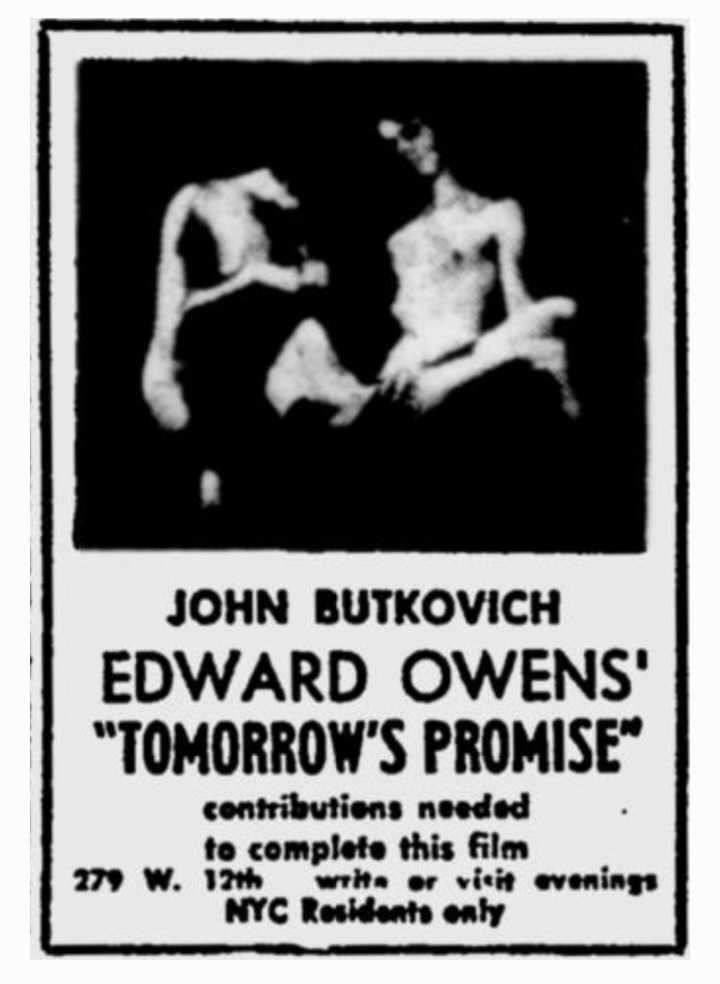
Owens’s friends and mentors pushed his career along, but could only do so much. Their enthusiasm did not translate into broader interest in Owens’s work.. Mekas did not review any of Owens’s films in his “Movie Journal” column in the Village Voice, though Owens did take out an ad in the Voice in an unconventional effort to raise funds for Tomorrow’s Promise. There are no contemporary reviews of Owens’s work, beyond the catalog blurbs. Yet even these endorsements underline Owens’s tentative membership in filmdom’s inner circle, a coterie of white men a generation older than him. “Edward Owens shows in Tomorrow’s Promise a quality so pictorially exciting that the next thing he must do is listen to my advice,” wrote Parker Tyler in a particularly catty flourish
Owens’s New York heyday was short-lived. After struggling to earn a living and kick a drug addiction, Owens moved back to Chicago in 1971, finished his degree, and worked as a caretaker for his mother. By the sixth edition of the Coop catalog in 1976, Owens’s films were nowhere to be found. He maintained a correspondence with Boultenhouse, but was otherwise absent from the film community. Over the next several decades, Owens would occasionally screen his films locally in Chicago, but critical and scholarly interest remained elusive.
CRITICAL REAPPRAISAL
In 2005, scholar Ron Gregg began researching neglected queer filmmakers in the collection of the Film-Makers’ Coop for a five-part survey ‘Beyond Warhol, Smith, and Anger: Recovering the Significance of Postwar Queer Underground Cinema’ at the University of Chicago Film Studies Center. Gregg’s 2006 program ‘The Gender Question/Questioning Gender’—which included Owens’s Tomorrow’s Promise and Private Imaginings and Narrative Facts alongside works by Ron Rice, Piero Heliczer, and Bill Vehr—received a capsule review in the Chicago Reader from Fred Camper and prompted discussion on Frameworks, the avant-garde listserv.
Several years later, the independent curator Ed Halter discovered Owens for himself while researching a film program to coincide with the Smithsonian’s ‘Hide/Seek: Difference and Desire in American Portraiture’ exhibition. Around this time, Halter also tracked down Owens and conducted several hours worth of phone interviews with him. Halter presented a program of queer films, including Owens’s Private Imaginings and Narrative Facts, at the University of Buffalo in 2011. Halter subsequently screened Owens’s work at various locations, culminating in a one-man show at Light Industry in Brooklyn in 2015. The program spurred an appraisal of Owens from J. Hoberman in Artforum later that summer.
Following the Light Industry screening, Owens’s films were digitized by the Film-Makers’ Coop and presented at the Tate Modern, the Museum of Modern Art, LA Filmforum, and the Conversations at the Edge series at the Gene Siskel Film Center.
THE FILMS
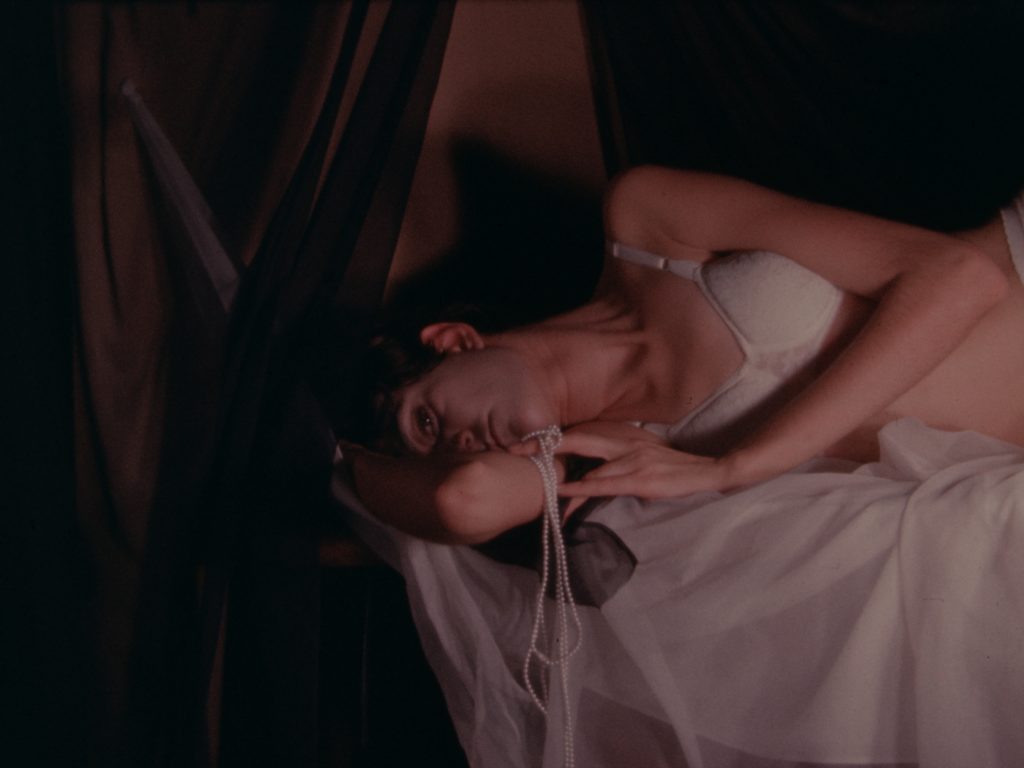
Autre fois, j’ai aimé une femme (Once I Loved a Woman) – 1966, 16mm, 22 min, Sound
Owens’s first 16mm film, completed when he was only 17, recalls the work of Gregory Markopoulos in its elaborate superimpositions, but Autre fois presents a budding style that is also distinctly Owens’s own—a fragmentary cinema with flashes of photographs, overheard snatches of poetry, and abruptly edited selections from David Amram’s incidental music composed for After the Fall. The French title is an affectation; the film was shot in Chicago using Owens’s friends, including then-girlfriend Gloria Rich.
Autre fois remains a difficult, perhaps deliberately exasperating, work, made with the cocky confidence of a teenage artiste. Owens’s taste for long stretches of black leader frustrated even his champions, including Parker Tyler. “He thought there was too much black,” recalled Owens, “but the reason there was too much black was because I was trying to say that the black represented the weight of a man, and the man was this blonde boy with these tremendous pressed, blonde bangs that appears at first immediately as the film opens. Then you get him showing again in bits and pieces …. I don’t think I should get rid of the black leader because it makes a great deal of sense. And Andy Warhol did it, except he did it with people just sitting there.”
Autre fois became Owens’s calling card upon his arrival in New York. Although it is not as densely constructed as Owens’s subsequent films, Autre fois is notable as the most explicitly homoerotic of his work—ironically before Owens avowed any such desires himself.
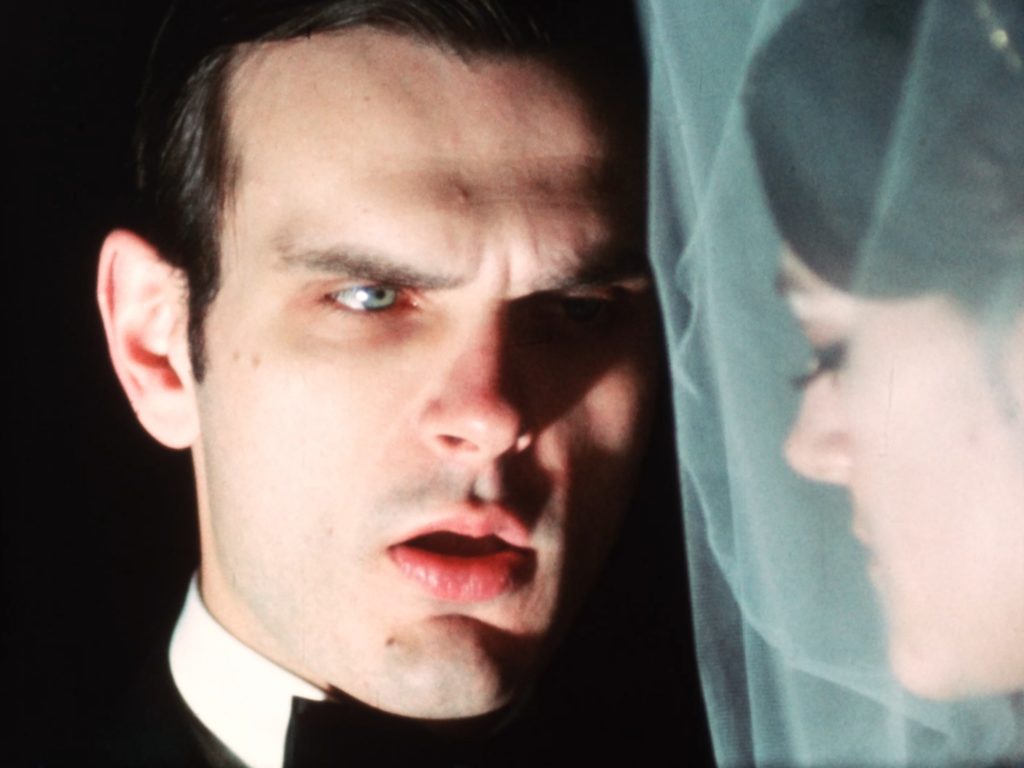
Tomorrow’s Promise -1967, 16mm, 45 min, Sound
A rapid maturation of the fleeting and elusive style that Owens deployed in Autre fois months earlier, Tomorrow’s Promise is perhaps his most ‘conventional’ work by the avant-garde standards of its era—a psychosexual exploration with theatrical, neoclassical, and mythopoetic overtones. Described by Owens as a film about vacantness, its form “so chimerical as life itself,” Tomorrow’s Promise plays today as one of the tonier underground movies of the late 1960s, complete with slick, professional credits—a $500 extravagance that likely constituted a substantial portion of the film’s overall budget.
“While in New York, Owens completed … the impressively assured Tomorrow’s Promise—reminiscent of Markopoulos’s Twice a Man (1963) and The Illiac Passion (1964-67) in its percussive style, elliptical narrative, and elevated notion of cinema. The movie is a flickering series of solemn, light-modeled portraits—some of the subjects nude, others veiled by superimposed foliage—accompanied by moody classical music. In the second half, Owens begins focusing on a pensive bride and her phantom groom, both shown in close-up profiles. That he also begins integrating images of Greta Garbo, Ingres’s Jupiter and Thetis, and the cover of Jacqueline Susann’s pulp novel Valley of the Dolls suggests that their breakup is being played out on a mock-cosmic level.” – J. Hoberman, Artforum (2015)
“Edward Owens has achieved in Tomorrow’s Promise a quality so exceedingly high that one is forced to term certain moments of the film bad only because they are surrounded by such rich nuance. Tomorrow’s Promise deals with complex, intellectually exciting subject matter yet remains unobscure. The nudity of the film is handled in a fresh and climactic way. Tomorrow’s Promise contains almost separate films and Mr. Owens has successfully assembled them toward one goal: vacantness. Mr. Owens appears to be a classicist adhering to his own valid principles of excellence in the arts … there will be no limit to the amount of beauty and excoriation he may choose to show us.” – Gregory Battcock, in a blurb submitted to the Film-Makers Coop catalog, 1970
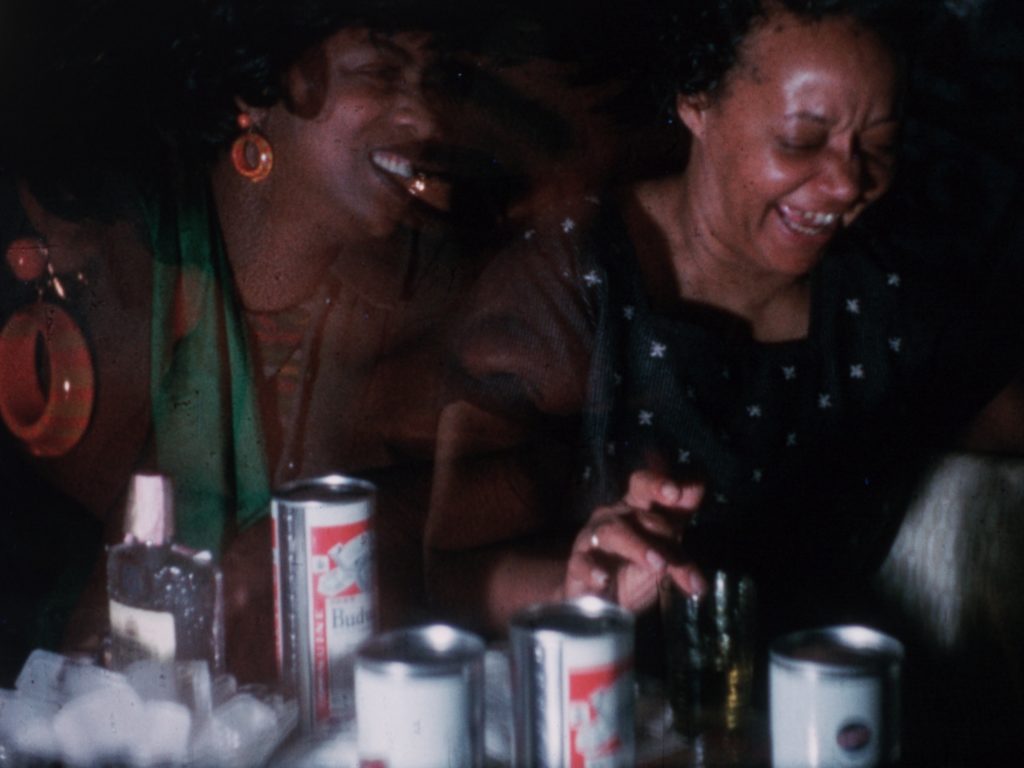
Remembrance: A Portrait Study – 1967, 16mm, 6 min, Sound
If Tomorrow’s Promise is rooted in the familiar erotic idiom of its underground contemporaries, then Owens’s follow-up, Remembrance, represents a break from both New York and its dominant concerns. Shot in Chicago with Owens’s mother, Mildred, and her friends Nettie Thomas and Irene Collins, Remembrance is an exuberant home movie that finds a new, more personal avenue for superimpositions and rapid cutting.
The musical score is Marilyn Monroe’s performance of “Running Wild” from Some Like it Hot and “All Cried Out” by Dusty Springfield. Owens’s mentors Markpolous and Tyler rejected the musical score as ‘not proper’; although the circulating print included an optical soundtrack, Owens seemingly took their advice and demurely listed Remembrance as a ‘silent’ film in the Film-Makers’ Coop catalog. Later in life, he suggested that Remembrance should be screened twice for each public exhibition—first with the soundtrack, then without.
“Owens supplies a spoken introduction to this tightly edited six-minute contemplation of his mother and her friends hanging out at home. Carefully lit and burnished by flickering superimpositions, these middle-aged black women are treated as movie stars—Mildered Owens is seated in a throne-like wicker chair, swathed in a feather boa. Unlike the subjects of Warhol’s Screen Tests, these sitters seem amused, exuding the cheery self-presentation characteristic of seventeenth-century Dutch portrait painting. Cigarettes and beer cans are in evidence. The superimposition of a white mannequin’s head underscores the incongruity.” – J Hoberman, Artforum (2015)
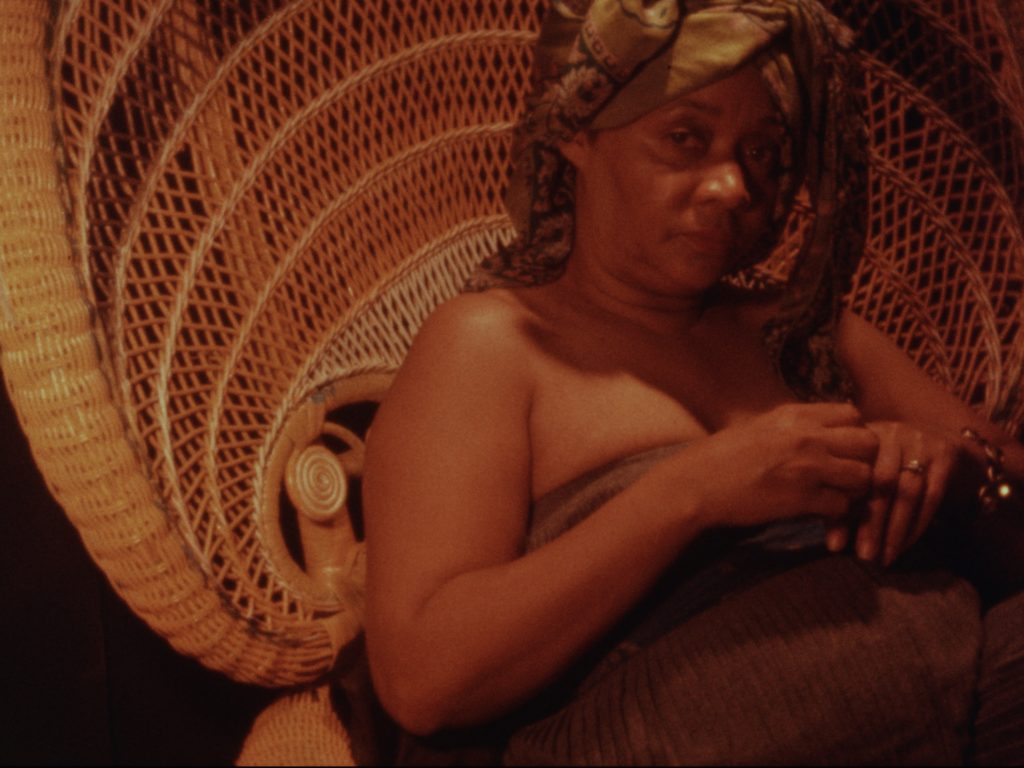
Private Imaginings and Narrative Facts – 1968-70, 16mm, 12 min, Silent (16 fps)
Private Imaginings and Narrative Facts continues the project of Remembrance, exploring the lives of Owens’s mother and her social circle with a delicate and lyrical assemblage. Originally titled Mildred Owens: Towards Fiction, this silent film was completed sometime around 1970, but not put into distribution until 1983. .
“A montage of still and moving images, mixing and alternating black people and white people, fantasy and reality, a presidential suite and a mother’s kitchen: a sensitive, poetic evocation in the manner of the film-maker’s Remembrance. Brilliantly colored and nostalgic, it comprises a magical transformation of painterly collage and still photographic sensibility into filmic time and space.” – Charles Boultenhouse (1983)
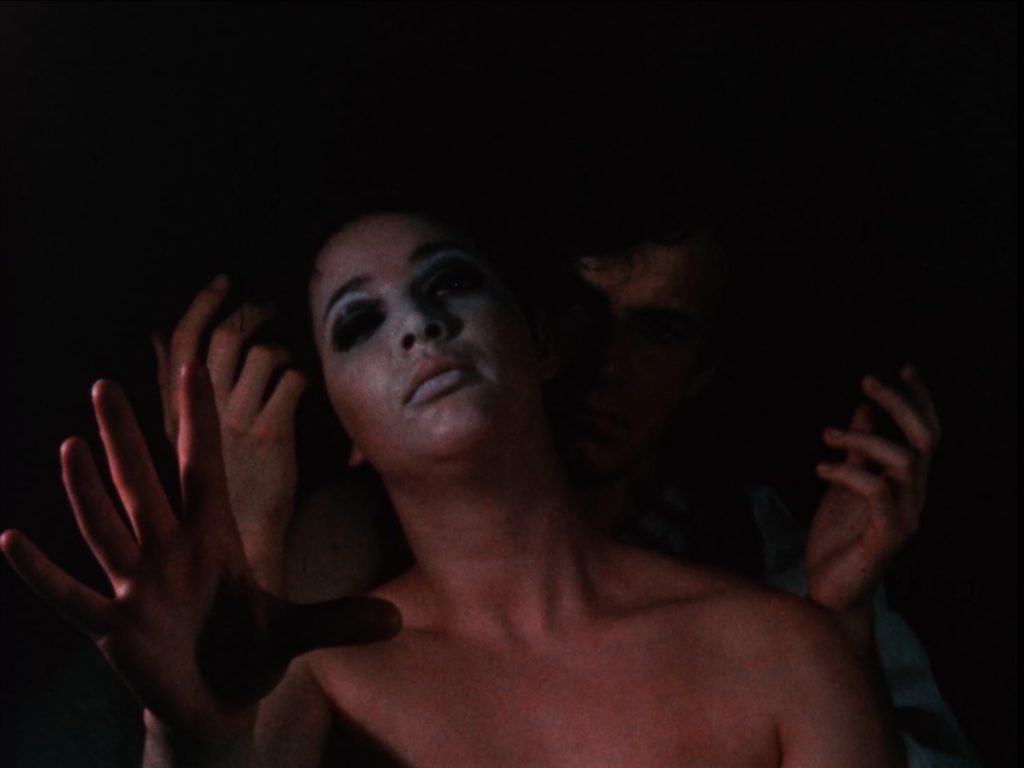
ABOUT THE RESTORATIONS
Edward Owens made his films on 16mm reversal stock–mostly Ektachrome; exhibition prints were made on Kodachrome reversal print stock. Although prints were placed in distribution at the Film-Maker’s Coop in New York and Circle Cinema Coop in Chicago, the films were not popular and were rarely rented when new. Thus there was little evident demand for additional prints, nor for the protection of a back-up negative.For many years, the prints at the Film-Makers’ Coop were the only copies known to survive.
Miraculously, the original picture rolls for Autre fois and Private Imaginings and Narrative Facts were rescued from an abandoned storage locker and donated to the Flaxman Library in 2019. The Flaxman donation also included a second print of Tomorrow’s Promise, with significant differences from the existing print at the Film-Makers’ Coop. These original materials, as well as the surviving prints at the Film-Makers’ Coop, served as the basis for the restorations. All elements were scanned in 4K, digitally restored, and printed back to film to create new polyester negatives and prints.
Owens’s work was not well-documented in his lifetime. Aside from contemporary catalog descriptions and correspondence and an oral history conducted by Ed Halter towards the end of Owens’s life, there is little to corroborate and clarify the final form of these films. We cannot compare the new restorations to contemporary reviews or academic accounts. Instead, we are left to dwell in ambiguity. Autre fois contains so much black leader that one might think it survives in an unfinished work print–until learning that Owens’s mentors gently pushed him, without success, to cut down on the black leader. Tomorrow’s Promise exists in two different versions, one of which contains notations that perhaps mapped out the structure of the other. Remembrance: A Portrait Study begins with a voice-over where Owens himself calls the film by an alternate title, No More Tomorrows. Furthermore, Owens was pressured into disavowing the soundtrack, going so far as to list Remembrance as a silent film in the Film-Makers’ Coop catalog. Private Imaginings and Narrative Facts was not known by that title until 1983, which was also the point when Owens first specified a projection speed of 16 frames per second. The restorations can only be as authoritative as the works themselves.
Autre Fois J’ai Aimé Une Femme – Picture source: Single-strand Ektachrome reversal camera original from Flaxman Library; sound source: composite Kodachrome reversal print from the Film-Makers’ Coop
Tomorrow’s Promise – Picture and sound source: Composite reversal print from the Flaxman Library
Remembrance: A Portrait Study – Picture and sound source: Composite reversal print from the Film-Makers’ Coop
Private Imaginings and Narrative Facts – Picture source: Original Ektachrome reversal A & B camera rolls from the Flaxman Library, with damaged sections replaced by footage from a silent reversal print from the Film-Makers’ Coop.
